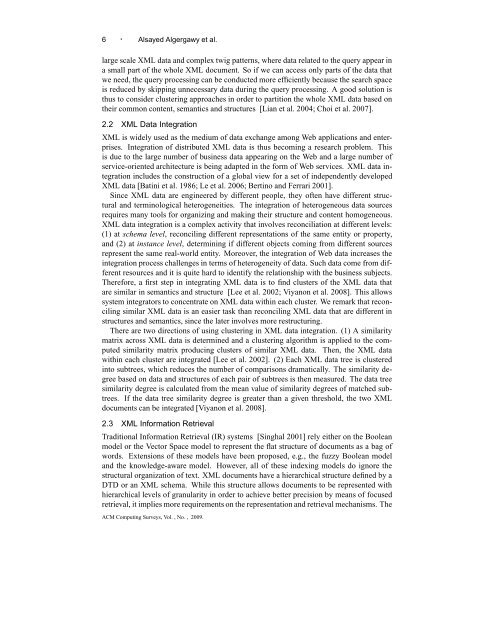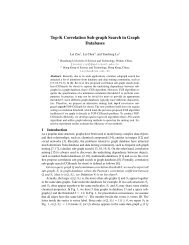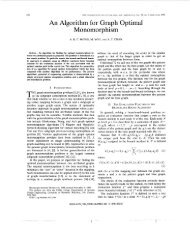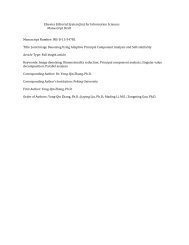PDF (1MB) - QUT ePrints
PDF (1MB) - QUT ePrints
PDF (1MB) - QUT ePrints
You also want an ePaper? Increase the reach of your titles
YUMPU automatically turns print PDFs into web optimized ePapers that Google loves.
6 · Alsayed Algergawy et al.<br />
large scale XML data and complex twig patterns, where data related to the query appear in<br />
a small part of the whole XML document. So if we can access only parts of the data that<br />
we need, the query processing can be conducted more efficiently because the search space<br />
is reduced by skipping unnecessary data during the query processing. A good solution is<br />
thus to consider clustering approaches in order to partition the whole XML data based on<br />
their common content, semantics and structures [Lian et al. 2004; Choi et al. 2007].<br />
2.2 XML Data Integration<br />
XML is widely used as the medium of data exchange among Web applications and enterprises.<br />
Integration of distributed XML data is thus becoming a research problem. This<br />
is due to the large number of business data appearing on the Web and a large number of<br />
service-oriented architecture is being adapted in the form of Web services. XML data integration<br />
includes the construction of a global view for a set of independently developed<br />
XML data [Batini et al. 1986; Le et al. 2006; Bertino and Ferrari 2001].<br />
Since XML data are engineered by different people, they often have different structural<br />
and terminological heterogeneities. The integration of heterogeneous data sources<br />
requires many tools for organizing and making their structure and content homogeneous.<br />
XML data integration is a complex activity that involves reconciliation at different levels:<br />
(1) at schema level, reconciling different representations of the same entity or property,<br />
and (2) at instance level, determining if different objects coming from different sources<br />
represent the same real-world entity. Moreover, the integration of Web data increases the<br />
integration process challenges in terms of heterogeneity of data. Such data come from different<br />
resources and it is quite hard to identify the relationship with the business subjects.<br />
Therefore, a first step in integrating XML data is to find clusters of the XML data that<br />
are similar in semantics and structure [Lee et al. 2002; Viyanon et al. 2008]. This allows<br />
system integrators to concentrate on XML data within each cluster. We remark that reconciling<br />
similar XML data is an easier task than reconciling XML data that are different in<br />
structures and semantics, since the later involves more restructuring.<br />
There are two directions of using clustering in XML data integration. (1) A similarity<br />
matrix across XML data is determined and a clustering algorithm is applied to the computed<br />
similarity matrix producing clusters of similar XML data. Then, the XML data<br />
within each cluster are integrated [Lee et al. 2002]. (2) Each XML data tree is clustered<br />
into subtrees, which reduces the number of comparisons dramatically. The similarity degree<br />
based on data and structures of each pair of subtrees is then measured. The data tree<br />
similarity degree is calculated from the mean value of similarity degrees of matched subtrees.<br />
If the data tree similarity degree is greater than a given threshold, the two XML<br />
documents can be integrated [Viyanon et al. 2008].<br />
2.3 XML Information Retrieval<br />
Traditional Information Retrieval (IR) systems [Singhal 2001] rely either on the Boolean<br />
model or the Vector Space model to represent the flat structure of documents as a bag of<br />
words. Extensions of these models have been proposed, e.g., the fuzzy Boolean model<br />
and the knowledge-aware model. However, all of these indexing models do ignore the<br />
structural organization of text. XML documents have a hierarchical structure defined by a<br />
DTD or an XML schema. While this structure allows documents to be represented with<br />
hierarchical levels of granularity in order to achieve better precision by means of focused<br />
retrieval, it implies more requirements on the representation and retrieval mechanisms. The<br />
ACM Computing Surveys, Vol. , No. , 2009.












